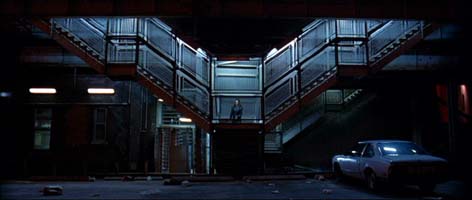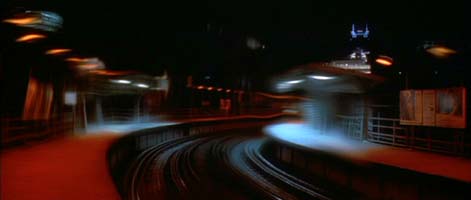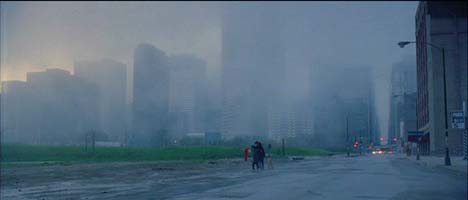|
One of the most difficult challenges for a
screenwriter of thrill-based entertainment (horror films, thrillers,
murder mysteries, etc.) is to hold the audience's attention in the
set-up stage, especially if the premise is complicated.
Doing just that is one of the many things that Dana Stevens did
right in this, her first screenplay. Although the gimmicky premise required
the transmission of a lot of information, the first 25 minutes went
well, transmitted
the many necessary facts in a painless manner, and got the audience
involved in the characters.
The overall premise could have made this just another gimmicky film
in which the killer, or an important witness, or an intended victim,
has a unusual medical malady. (Multiple personality disorder or
amnesia, anyone?) In this case, the set-up is kind of a really
complicated version of "Wait Until Dark". The key murder witness is
blind. Well, actually, she was blind until six weeks ago. Since her
transplant, she is still kinda sorta still blind, but she can also
kinda sorta see. Sometimes she sees things clearly, but more often
not. Most important to the plot, she seems to have some kind of a
delay in her nervous system. Stuff happens before her eyes on
Tuesday, but she doesn't actually see it until Wednesday. To make
matters even worse, some of her visions are flashbacks to events
which happened decades earlier (before she lost her sight), so she
is trapped in a world of dimly perceived sights which may or may not
be clear, and may or may not be happening as she sees them.
For example, she went to a mirror and saw herself in
the mirror as a child - the last thing she saw before she lost her
sight twenty years earlier. Then she saw her friend in the hospital,
although the friend had actually been there the day before. Given
those facts, how could she know whether the criminal she saw was
someone she really saw then and there, or someone from a day before,
or even twenty years before?
|



